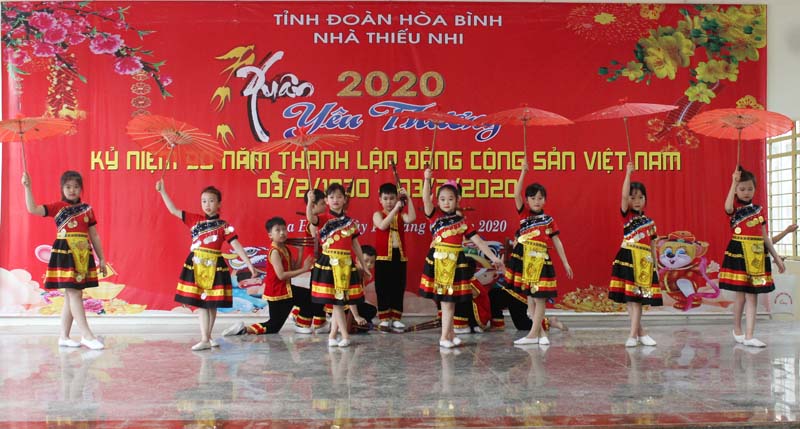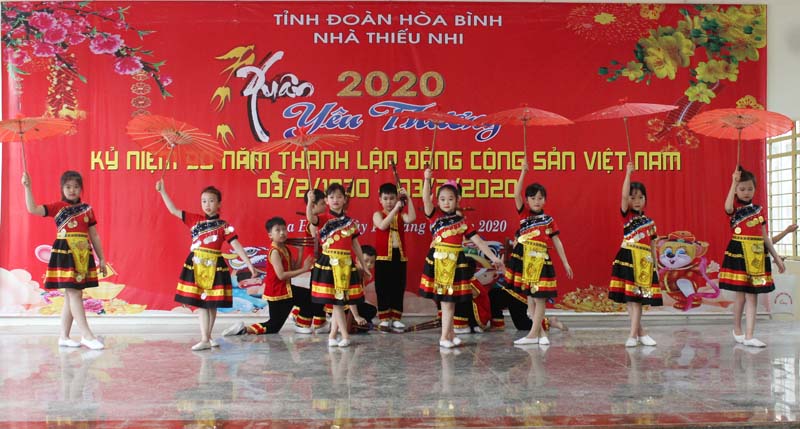
(HBO) - On the occasion of the 90th anniversary of the founding of the Communist Party of Vietnam on February 2, 1930 - February 3, 2020 and preparing to welcome the traditional New Year of the nation, on January 11, the provincial Children's House organized the performance art "The happy spring, 2020.”

The young children have been singing to welcome a Happy
Spring in 2020 with the theme of praising the Glorious Party, the great Uncle
Ho, the love for the homeland, the spring and so on. The children taking part in
the Children's House of the province have performed a lot of special songs and
dances. The form of performance is abundant.
Thereby, it has shown the gratitude of the young generation
to the Communist Party of Vietnam and beloved Uncle Ho as martyrs' heroes
sacrificed for the cause of national liberation. At the same time, it has
created a joyful, warm atmosphere helping the children have more determination
to achieve high results in study.
In the framework of the program, they were also introduced
the meaning and participated in the traditional folk games of the Vietnamese
people during Tet holidays such as tug of war, mandarin square capturing,
hopscotch, rope jumping and so on.
On this occasion, the Provincial Children's House also gave
gifts to 15 students having difficult circumstances but making great effort in
studying and are currently participating the Center.
With an increasingly vibrant and widespread emulation movement aimed at building cultured residential areas and cultured families, Yen Thuy District has been making steady progress toward improving both the material and spiritual well-being of its people, while fostering a civilized, prosperous, beautiful, and progressive community.
Once lacking recreational spaces and community facilities, Residential Group 2 in Quynh Lam Ward (Hoa Binh City) has recently received attention for the construction of a new, spacious, and fully equipped cultural house. The project followed the model of state support combined with public contributions in both labor and funding.
The "All people unite to build cultural life" movement, which has been effectively integrated with Kim Boi district’s socio-economic development goals, is fostering a lively spirit of emulation across local residential areas, hamlets, villages, public agencies, and enterprises. In addition, through the initiative, traditional cultural values are being preserved and promoted, while community solidarity and mutual support in poverty reduction and economic development are being strengthened.
A working delegation of the Hoa Binh provincial People’s Committee led by its Permanent Vice Chairman Nguyen Van Toan on June 11 inspected the progress of a project to build the Mo Muong Cultural Heritage Conservation Space linked to tourism services in Hop Phong commune, Cao Phong district.
Born and growing in the heroic land of Muong Dong, Dinh Thi Kieu Dung, a resident in Bo town of Kim Boi district, in her childhood was nurtured by the sweet lullabies of her grandmother and mother. These melodies deeply imprinted on her soul, becoming an inseparable part of her love for her ethnic group's culture. For over 20 years, this love for her hometown has driven Dung to research, collect, and pass down the cultural values of the Muong people to future generations.
In the final days of May, the Ethnic Art Troupe of Hoa Binh Province organized performances to serve the people in remote, mountainous, and particularly disadvantaged areas within the province. These were not just ordinary artistic shows, but they were the meaningful journeys aimed at spreading cultural values, enhancing the spiritual life of the people and contributing to the preservation of ethnic minority cultural identities.



